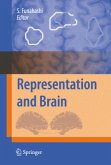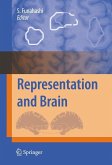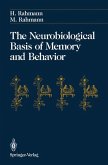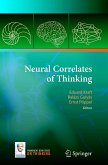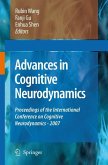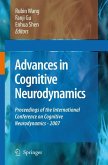Spatially Oriented Behavior
Herausgegeben von Hein, A.; Jeannerod, M.
Spatially Oriented Behavior
Herausgegeben von Hein, A.; Jeannerod, M.
- Broschiertes Buch
- Merkliste
- Auf die Merkliste
- Bewerten Bewerten
- Teilen
- Produkt teilen
- Produkterinnerung
- Produkterinnerung
This volume is the outcome of a Symposium held in Lyon, France. The meeting was organized under the auspices of the Institut National de la Sante et de la Recherche Medicale (INSERM, Paris). We are grateful to the Universite Claude-Bernard which allowed us to use the house of the Brothers Lumiere for the site of the meeting. We would also like to acknowledge the generosity of the Fondation Merieux (Lyon) which pro vided us with a reception at the house where Claude Bernard was born. In addition to the authors ofthis volume we wish to thank the following individuals for their contributions to…mehr
Andere Kunden interessierten sich auch für
![Representation and Brain Representation and Brain]() Representation and Brain112,99 €
Representation and Brain112,99 €![Representation and Brain Representation and Brain]() Shintaro Funahashi (ed.)Representation and Brain115,99 €
Shintaro Funahashi (ed.)Representation and Brain115,99 €![The Neurobiological Basis of Memory and Behavior The Neurobiological Basis of Memory and Behavior]() Hinrich RahmannThe Neurobiological Basis of Memory and Behavior75,99 €
Hinrich RahmannThe Neurobiological Basis of Memory and Behavior75,99 €![Neural Correlates of Thinking Neural Correlates of Thinking]() Neural Correlates of Thinking149,99 €
Neural Correlates of Thinking149,99 €![Advances in Cognitive Neurodynamics Advances in Cognitive Neurodynamics]() Advances in Cognitive Neurodynamics345,99 €
Advances in Cognitive Neurodynamics345,99 €![Advances in Cognitive Neurodynamics Advances in Cognitive Neurodynamics]() Rubin Wang / Fanji Gu / Enhua Shen (eds.)Advances in Cognitive Neurodynamics345,99 €
Rubin Wang / Fanji Gu / Enhua Shen (eds.)Advances in Cognitive Neurodynamics345,99 €![The Basal Ganglia IX The Basal Ganglia IX]() Henk J. Groenewegen / Pieter Voorn / Henk W. et al. Berendse (Hrsg.)The Basal Ganglia IX246,99 €
Henk J. Groenewegen / Pieter Voorn / Henk W. et al. Berendse (Hrsg.)The Basal Ganglia IX246,99 €-
-
-
This volume is the outcome of a Symposium held in Lyon, France. The meeting was organized under the auspices of the Institut National de la Sante et de la Recherche Medicale (INSERM, Paris). We are grateful to the Universite Claude-Bernard which allowed us to use the house of the Brothers Lumiere for the site of the meeting. We would also like to acknowledge the generosity of the Fondation Merieux (Lyon) which pro vided us with a reception at the house where Claude Bernard was born. In addition to the authors ofthis volume we wish to thank the following individuals for their contributions to the success ofthe Symposium: Chris tine Baleydier, Simon Faugier-Grimaud, Francoise Girardet, Jacqueline Jeannerod, Henry Kennedy, Michele Magnin, Claude Prablanc, Kath~ erine Page, Lawrence Stark and Francois Vital-Durand. Support from the Office of Naval Research (Contract # N00014-80-K- 0243), the National Eye Institute (Grant # 1 P30-EY02621), the Institut National de la Sante et de la Recherche Medicale (Paris) and Sherin Stahl, a participant in the Undergraduate Research Opportunities Program of the Massachusetts Institute of Technology made this volume possible.
Produktdetails
- Produktdetails
- Verlag: Springer / Springer New York / Springer, Berlin
- Artikelnr. des Verlages: 978-1-4612-5490-4
- Softcover reprint of the original 1st ed. 1983
- Seitenzahl: 384
- Erscheinungstermin: 13. Oktober 2011
- Englisch
- Abmessung: 235mm x 155mm x 21mm
- Gewicht: 581g
- ISBN-13: 9781461254904
- ISBN-10: 1461254906
- Artikelnr.: 36114684
- Herstellerkennzeichnung
- Springer-Verlag GmbH
- Tiergartenstr. 17
- 69121 Heidelberg
- ProductSafety@springernature.com
- Verlag: Springer / Springer New York / Springer, Berlin
- Artikelnr. des Verlages: 978-1-4612-5490-4
- Softcover reprint of the original 1st ed. 1983
- Seitenzahl: 384
- Erscheinungstermin: 13. Oktober 2011
- Englisch
- Abmessung: 235mm x 155mm x 21mm
- Gewicht: 581g
- ISBN-13: 9781461254904
- ISBN-10: 1461254906
- Artikelnr.: 36114684
- Herstellerkennzeichnung
- Springer-Verlag GmbH
- Tiergartenstr. 17
- 69121 Heidelberg
- ProductSafety@springernature.com
1 How Do We Direct Our Actions in Space?.- Different Modes of Processing Visual Spatial Information.- Role of the Extraretinal Signal in Perceptual Stability of Visual Space.- The Paralyzed Eye Situation as a Cue for Understanding Visuomotor Localization.- The Role of Registered vs. Actual Gaze Position in Guiding Behavior.- 2 Maintenance of Equilibrium During Movement.- How Is Body Posture Established?.- How Do Movement and Posture Interact?.- Coordination Between Posture and Movement in the Quadruped.- Central Organization of Postural Changes.- Conclusions.- 3 Neural Mechanisms of Visual Orientation in Rodents: Targets Versus Places.- Visually Guided Movements Toward Targets.- Visually Guided Movements Toward Places.- Conclusions.- 4 Role of the Monkey Superior Colliculus in the Spatial Localization of Saccade Targets.- Role of the Superior Colliculus in Saccadic Eye Movements.- Models of the Saccadic Eye Movement System.- Neural Representations of Saccade Targets.- 5 Interface of Visual Input and Oculomotor Command for Directing the Gaze on Target.- Internal Medullary Lamina.- Experimental Examination of the Hypothesis of Adequate Response.- Visual Responses to Target Location in Space.- Discussion.- 6 Coordination of Eye-Head Movements in Alert Monkeys: Behavior of Eye-Related Neurons in the Brain Stem.- Experimental Method.- Behavior of PRF Preoculomotor Neurons During Eye-Head Coordination.- Coordination of Head and Eyes in the Saccadic Changes of Gaze.- Conclusions.- 7 Contribution of Eye Movement to the Representation of Space.- How Is Visual Direction Given?.- What Is the Source of Knowledge of Eye Position?.- Conclusions.- 8 Control of the Optokinetic Reflex by the Nucleus of the Optic Tract in the Cat.- Functional Anatomy of NOT.- Relationship Between NOT Output and OKN.- Conclusions.- 9 Development of Optokinetic Nystagmus and Effects of Abnormal Visual Experience During Infancy.- Human OKN Development.- Other Studies.- Future Research.- 10 Spatially Determined Visual Activity in Early Infancy.- Appreciation of Spatial Relations.- Visual Anticipation of Spatiotemporal Events.- Spatial Sensitivity at Birth.- Conclusions.- 11 Spatial Sense of the Human Infant.- Experiments in Reaching.- Experiments in Intermodal Spatial Coordination.- Orienting to Touch.- Conclusions.- 12 Space, the Organism and Objects, Their Cognitive Elaboration in the Infant.- The Development of Organized Movements for Tracking a Moving Visual Object.- 13 Motion Parallax Sensitivity and Space Perception.- Space Perception.- Psychophysical Observations in Motion Parallax.- Implications for Space Perception.- 14 Perceptual Consequences of Experimental Extraocular Muscle Paralysis.- The Kernel Observation under Partial Paralysis: Perceived Change in Elevation.- Quantitative Measurements of Perceived Eye-Level Horizontal.- Illusory Changes in Visual Localization of the Median Plane.- Influence of Level of Paralysis.- Three-Parameter Model of the Influence of Paralysis on Visual Localization and Oculomotor Control.- Illumination Versus Darkness.- Auditory-Visual Matches.- EEPI and Cancellation Are Not Suppressed in Illumination; Visual Localization and Intersensory Localization Are Guided by Cancellation in Darkness.- A Paradox and Its Resolution.- Source of EEPI.- 15 Mechanisms of Space Constancy.- Beyond Corollary Discharge.- Rules of Motion Perception During Saccades Versus During Fixation.- Exploring Space Constancy with Figure-Ground Reversible Images.- Mechanisms of Stabilization.- 16 Visual Information Processing for Saccadic Eye Movements.- ProcessesInvolved in Saccade Generation.- Retinal Eccentricity and Saccade Direction.- Saccade Latency.- Saccade Amplitude.- Conclusions.- 17 Optic Ataxia: A Specific Disorder in Visuomotor Coordination.- Case Reports.- Neuropsychological Symptoms.- Proximal and Distal Deficits in Optic Ataxia.- Comparison with Findings from Experiments in Monkeys.- Effects of Altering Spatial Cues on Reaching Behavior in Optic Ataxia.- Discussion.- 18 Multimodal Structure of the Extrapersonal Space.- Compartments of Extrapersonal Space.- Coordinates of Extrapersonal Space.- Disturbances in the Perception of Objects and Space Following Parietal and Occipital Corex Lesions.- Multimodal Control of Eye Movements.- Conclusions.- Author Index.
1 How Do We Direct Our Actions in Space?.- Different Modes of Processing Visual Spatial Information.- Role of the Extraretinal Signal in Perceptual Stability of Visual Space.- The Paralyzed Eye Situation as a Cue for Understanding Visuomotor Localization.- The Role of Registered vs. Actual Gaze Position in Guiding Behavior.- 2 Maintenance of Equilibrium During Movement.- How Is Body Posture Established?.- How Do Movement and Posture Interact?.- Coordination Between Posture and Movement in the Quadruped.- Central Organization of Postural Changes.- Conclusions.- 3 Neural Mechanisms of Visual Orientation in Rodents: Targets Versus Places.- Visually Guided Movements Toward Targets.- Visually Guided Movements Toward Places.- Conclusions.- 4 Role of the Monkey Superior Colliculus in the Spatial Localization of Saccade Targets.- Role of the Superior Colliculus in Saccadic Eye Movements.- Models of the Saccadic Eye Movement System.- Neural Representations of Saccade Targets.- 5 Interface of Visual Input and Oculomotor Command for Directing the Gaze on Target.- Internal Medullary Lamina.- Experimental Examination of the Hypothesis of Adequate Response.- Visual Responses to Target Location in Space.- Discussion.- 6 Coordination of Eye-Head Movements in Alert Monkeys: Behavior of Eye-Related Neurons in the Brain Stem.- Experimental Method.- Behavior of PRF Preoculomotor Neurons During Eye-Head Coordination.- Coordination of Head and Eyes in the Saccadic Changes of Gaze.- Conclusions.- 7 Contribution of Eye Movement to the Representation of Space.- How Is Visual Direction Given?.- What Is the Source of Knowledge of Eye Position?.- Conclusions.- 8 Control of the Optokinetic Reflex by the Nucleus of the Optic Tract in the Cat.- Functional Anatomy of NOT.- Relationship Between NOT Output and OKN.- Conclusions.- 9 Development of Optokinetic Nystagmus and Effects of Abnormal Visual Experience During Infancy.- Human OKN Development.- Other Studies.- Future Research.- 10 Spatially Determined Visual Activity in Early Infancy.- Appreciation of Spatial Relations.- Visual Anticipation of Spatiotemporal Events.- Spatial Sensitivity at Birth.- Conclusions.- 11 Spatial Sense of the Human Infant.- Experiments in Reaching.- Experiments in Intermodal Spatial Coordination.- Orienting to Touch.- Conclusions.- 12 Space, the Organism and Objects, Their Cognitive Elaboration in the Infant.- The Development of Organized Movements for Tracking a Moving Visual Object.- 13 Motion Parallax Sensitivity and Space Perception.- Space Perception.- Psychophysical Observations in Motion Parallax.- Implications for Space Perception.- 14 Perceptual Consequences of Experimental Extraocular Muscle Paralysis.- The Kernel Observation under Partial Paralysis: Perceived Change in Elevation.- Quantitative Measurements of Perceived Eye-Level Horizontal.- Illusory Changes in Visual Localization of the Median Plane.- Influence of Level of Paralysis.- Three-Parameter Model of the Influence of Paralysis on Visual Localization and Oculomotor Control.- Illumination Versus Darkness.- Auditory-Visual Matches.- EEPI and Cancellation Are Not Suppressed in Illumination; Visual Localization and Intersensory Localization Are Guided by Cancellation in Darkness.- A Paradox and Its Resolution.- Source of EEPI.- 15 Mechanisms of Space Constancy.- Beyond Corollary Discharge.- Rules of Motion Perception During Saccades Versus During Fixation.- Exploring Space Constancy with Figure-Ground Reversible Images.- Mechanisms of Stabilization.- 16 Visual Information Processing for Saccadic Eye Movements.- ProcessesInvolved in Saccade Generation.- Retinal Eccentricity and Saccade Direction.- Saccade Latency.- Saccade Amplitude.- Conclusions.- 17 Optic Ataxia: A Specific Disorder in Visuomotor Coordination.- Case Reports.- Neuropsychological Symptoms.- Proximal and Distal Deficits in Optic Ataxia.- Comparison with Findings from Experiments in Monkeys.- Effects of Altering Spatial Cues on Reaching Behavior in Optic Ataxia.- Discussion.- 18 Multimodal Structure of the Extrapersonal Space.- Compartments of Extrapersonal Space.- Coordinates of Extrapersonal Space.- Disturbances in the Perception of Objects and Space Following Parietal and Occipital Corex Lesions.- Multimodal Control of Eye Movements.- Conclusions.- Author Index.



